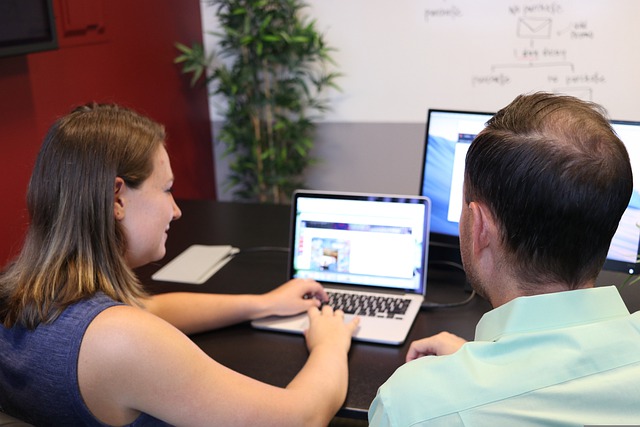
Lots of people think websites that are flashy attract visitors, but that’s not always the case. Simplicity is often the key to success. Continue reading for tips to help you design your own website.
When you design a web page, always choose the graphics that are appropriate for your purposes. BMP files are large and can slow down a website. For simple text buttons or graphics that aren’t photographs, use PNG for files that are 256 colors or larger. Use a GIF file for anything less than 256. For photos, JPEG images work well.
Help your visitors navigate your page via fixed position navigation. This technique locks the navigation panel on the site in place whenever the user scrolls on the page. This makes thing convenient for visitors and facilitates them taking advantage of your calls to action.
Speed is vital when it comes to the Internet; therefore, you should ensure that your pages load really fast. If a visitor to your site has to wait minutes for pages to laod, they’ll get bored and go elsewhere.
If you want to build a great site, you should buy one of the website development programs available today. You will be happy with the professional product these programs can produce. If your website is unattractive, it won’t gain many visitors.
Continue to improve your site’s load time whenever possible. If visitors have to wait too long, they will likely leave. When you reduce your graphics and other fancy elements, you will speed up access to your pages and retain your visitors.
Always use fonts that look professional and are readable. Most corporate sites use just a few basic fonts. Fancy fonts, such as those that look like gothic lettering or calligraphy, can often be hard to read. Other fonts, like Comic Sans, send a message that you aren’t professional. Your style should specify a default font in case a user doesn’t have your preferred font. Many times, the result is very unappealing.
When you are facing a block in your design process, you have the Internet at your fingertips for help. If you need inspiration, browse some of the other websites out there. When you find things you like, think about how you can use those ideas or even improve upon them. You can’t just copy someone else to be successful though. Making improvements on borrowed ideas makes them yours.
Although the tools that a host makes available for web page design can help you arrange your site’s basic layout, you shouldn’t rely on them exclusively. It is ideal that you add an element of uniqueness and personality to your website. This will mean that you need come up with new design elements that are not obtainable by using the provided options of the host’s WYSIWYG editor.
Development platforms build the code for you, however, they really are not as dependable as a regular text editor. The idea with a platform is that you design the site features, and then paste the generated code. However, if you’re wanting to minimize errors and have an excellent experience, you need to utilize a text editor.
When you are choosing your hosting service for the site, you have to be sure you understand everything that comes in the package. Make sure that you understand the bandwidth, storage space, CPU usage, and any extras that come with the offer. Ensure that you understand what you’ll be receiving.
Proofreading your content will ensure that it does not looked rushed or amateur. This will make it easier for people to read. If your site is rife with errors, it makes you look like a rank amateur. Visitors will dismiss you immediately.
Do not feel as though you must design every portion of your site yourself. In order to be successful at web page design, you need to know about content creation, graphic design, web programming, user interface design and search engine optimization. You should not feel ashamed to get help in the areas you feel least comfortable. When it comes to those web page design areas that you lack expertise in, hiring a specialist or a professional company may be well worth the cost.
If you plan to design multiple sites, it is wise for you to learn to work with a number of platforms. Learning Java, MySQL, PHP and other platforms is going to help you for years to come. Take the time to develop skills that can be applied across multiple platforms, regardless of whether your needs are personal or professional.
Check the statistics on your site regularly. This information will inform you of the number of people that visits each page on your website. This provides you with information regarding where to make the most effective updates to encourage return visits.
Stay away from using Flash with your website. Despite it’s visual appeal and features, it can be a problem when a website visitor’s computer can’t effectively use the feature. On top of this, some mobile devices and tablet computers lack an installation Flash software and there is also an ongoing standardization of open software that performs the same tasks that Flash traditionally has done, an example being HTML5 video.
As stated above, it is better to stick with simple designs in a website. If you have a good understanding of what it takes to create a site that looks nice without being overly flashy, then your site will be successful. The tips above can help you achieve that goal.